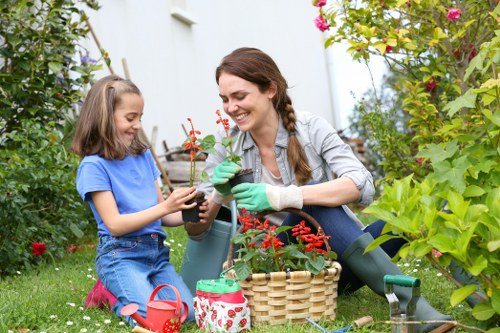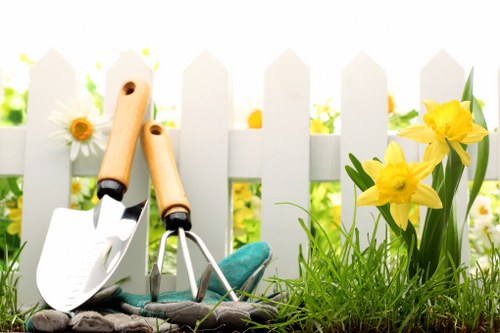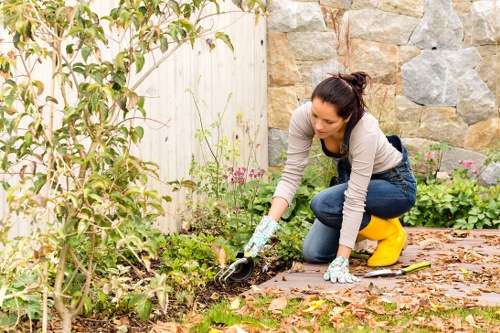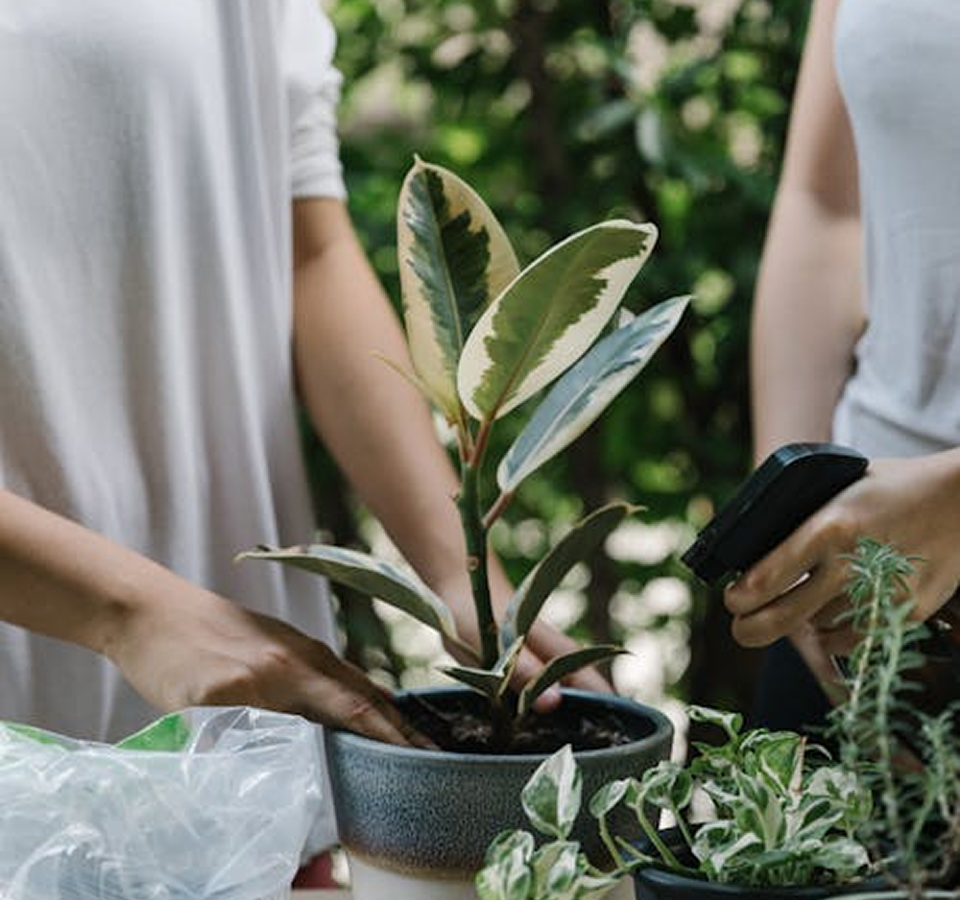Comprehensive Guide to Garden Maintenance in Queens Park
Introduction to Garden Maintenance

Maintaining a beautiful garden in Queens Park requires dedication, knowledge, and the right set of tools. Whether you are a seasoned gardener or a novice, understanding the essential aspects of garden maintenance can transform your outdoor space into a vibrant and thriving oasis.
Queens Park, known for its lush landscapes and diverse flora, offers the perfect environment for gardening enthusiasts. However, like any other garden, it demands regular care to keep it healthy and aesthetically pleasing.
In this article, we will explore various strategies and tips for effective garden maintenance in Queens Park, ensuring your garden remains a source of pride and relaxation.
Seasonal Maintenance Tips

Gardening in Queens Park involves adapting to the changing seasons. Each season presents unique challenges and opportunities for garden upkeep.
Spring Maintenance
Spring is a critical time for garden maintenance. It’s the season of renewal, and proper care can set the tone for the rest of the year.
- Pruning: Remove dead or damaged branches to promote healthy growth.
- Soil Preparation: Enrich the soil with compost or fertilizers to provide essential nutrients.
- Planting: Introduce new plants and flowers that thrive in the spring climate.
Additionally, it’s important to monitor for pests and diseases that may emerge as the weather warms.
Summer Garden Care

Summer in Queens Park brings intense sunlight and warmer temperatures, which can be both a blessing and a challenge for your garden.
Watering Strategies
Proper watering is essential to keep your plants hydrated. Early morning and late evening are the best times to water, reducing evaporation and ensuring deep absorption.
- Drip Irrigation: Efficiently delivers water directly to the plant roots.
- Mulching: Helps retain soil moisture and regulate temperature.
- Shade Provision: Provide partial shade for plants sensitive to excessive heat.
Regularly check for signs of drought stress and adjust your watering schedule accordingly.
Autumn Garden Upkeep

As temperatures cool, autumn provides a chance to prepare your garden for the colder months ahead.
Leaf Management
Fallen leaves can be an issue if not managed properly. Regularly raking and composting leaves can prevent mold and provide valuable nutrients to the soil.
- Composting: Turn leaves into rich compost to enhance soil fertility.
- Mulching: Apply a layer of mulch to protect plant roots from frost.
- Cleaning: Remove debris to reduce hiding spots for pests.
Additionally, consider planting autumn-blooming flowers to extend the beauty of your garden.
Winter Garden Preparation

Winter poses unique challenges, but with proper preparation, your garden can emerge strong in the spring.
Protecting Plants
Use protective covers such as burlap or frost cloths to shield sensitive plants from harsh winter conditions.
- Pruning: Trim perennials and shrubs to prevent damage from snow and ice.
- Storage: Store tools and equipment in a dry place to prevent rust and deterioration.
- Soil Care: Prevent soil erosion by covering beds with mulch or leaves.
It's also a good time to review your garden plans and make notes for the upcoming year.
Essential Tools for Garden Maintenance
Must-Have Gardening Tools
Having the right tools can make garden maintenance more efficient and enjoyable.
- Pruners: For precise trimming and shaping of plants.
- Garden Fork: Essential for aerating and turning the soil.
- Watering Can: For targeted watering of delicate plants.
- Wheelbarrow: Helps in transporting soil, compost, and plants.
- Gloves: Protect your hands from thorns, dirt, and pesticides.
Investing in high-quality tools can enhance your gardening experience and ensure longevity.
Soil Health and Fertilization
Understanding Soil Composition
Healthy soil is the foundation of a thriving garden. Understanding your soil type can help you make informed decisions about amendments and plant selection.
- Sandy Soil: Drains quickly but may require regular watering and fertilization.
- Clay Soil: Retains water but can benefit from aeration and organic matter.
- Loamy Soil: Ideal for most plants, offering a balanced mix of sand, silt, and clay.
Regularly testing your soil’s pH and nutrient levels can guide your fertilization strategy.
Effective Fertilization Practices
Proper fertilization ensures your plants receive the necessary nutrients for growth and flowering.
- Organic Fertilizers: Compost, manure, and bone meal enrich the soil naturally.
- Synthetic Fertilizers: Provide specific nutrients but should be used sparingly to avoid soil imbalance.
- Application Timing: Apply fertilizers during the growing season for optimal absorption.
Balancing nutrient application with plant needs maintains soil health and promotes vigorous growth.
Pest and Disease Management
Identifying Common Pests
Pests can pose a significant threat to your garden’s health. Early identification and management are crucial.
- Aphids: Small insects that suck sap from plants, causing stunted growth.
- Snails and Slugs: Feed on leaves and can quickly damage plants.
- Spider Mites: Cause discoloration and stippling on foliage.
Implementing natural pest control methods can minimize damage without harming beneficial insects.
Preventing Plant Diseases
Diseases such as powdery mildew and root rot can devastate your garden if left unchecked.
- Proper Spacing: Ensures adequate airflow, reducing the risk of fungal infections.
- Sanitation: Remove and dispose of infected plant material promptly.
- Resistant Varieties: Choose plant varieties that are less susceptible to common diseases.
Regular monitoring and proactive measures can keep your garden free from harmful diseases.
Lawn Care in Queens Park
Maintaining a Healthy Lawn
A well-maintained lawn enhances the overall appearance of your garden and provides a lush space for relaxation and activities.
- Mowing: Regular mowing at the appropriate height encourages dense growth.
- Aeration: Reduces soil compaction and improves root development.
- Fertilization: Provides essential nutrients for grass health.
Incorporate reseeding in areas with bare patches to maintain a uniform lawn.
Dealing with Common Lawn Issues
Addressing issues like weeds, pests, and diseases promptly ensures a healthy and vibrant lawn.
- Weed Control: Use pre-emergent and post-emergent herbicides or manual removal.
- Pest Management: Identify and treat pests early to prevent widespread damage.
- Disease Prevention: Ensure proper drainage and avoid overwatering to prevent fungal diseases.
Regular inspection and maintenance are key to overcoming common lawn challenges.
Plant Selection and Arrangement
Choosing the Right Plants
Selecting plants suited to Queens Park’s climate and soil conditions is essential for a thriving garden.
- Native Plants: Adapt well to local conditions and require less maintenance.
- Perennials: Offer long-term beauty and reduce the need for replanting.
- Flowering Plants: Add color and attract pollinators to your garden.
Consider the sunlight, water requirements, and growth habits of plants to ensure harmonious arrangements.
Designing Your Garden Layout
A well-planned layout enhances the aesthetic appeal and functionality of your garden.
- Pathways: Provide structure and accessibility within the garden.
- Bed Arrangement: Organize plants in raised beds or borders for easy maintenance.
- Focal Points: Incorporate features like fountains, sculptures, or specimen plants to draw attention.
Balancing plant heights, colors, and textures creates visual interest and a cohesive look.
Irrigation Systems
Implementing Efficient Watering Solutions
Effective irrigation is vital for maintaining garden health, especially during dry spells.
- Drip Irrigation: Delivers water directly to plant roots, reducing waste.
- Sprinkler Systems: Suitable for lawns and larger plant areas.
- Rainwater Harvesting: Collects and stores rainwater for sustainable use.
Regularly inspect and maintain your irrigation system to ensure it operates efficiently.
Water Conservation Tips
Conserving water not only benefits the environment but also reduces your water bills.
- Mulching: Retains soil moisture and minimizes evaporation.
- Drought-Tolerant Plants: Incorporate species that require less water.
- Smart Controllers: Use timers and sensors to optimize watering schedules.
Adopting water-saving practices contributes to a sustainable and eco-friendly garden.
Pruning and Trimming Techniques
Effective Pruning Practices
Regular pruning encourages healthy growth and maintains the desired shape of your plants.
- Timing: Prune at the appropriate season for each plant type.
- Tools: Use sharp and clean tools to make precise cuts.
- Techniques: Remove dead or diseased branches and thin out dense areas.
Proper pruning stimulates new growth and enhances air circulation within the plant canopy.
Trimming for Aesthetics
Trimming adds a neat and structured appearance to your garden, highlighting its beauty.
- Hedges: Shape hedges for privacy and defining garden boundaries.
- Topiary: Create artistic forms with evergreen shrubs.
- Flower Beds: Trim back overgrown plants to showcase colorful blooms.
Regular trimming maintains the health and appearance of your garden elements.
Soil Amendment and Composting
Enhancing Soil Quality
Amending the soil improves its structure, fertility, and overall health.
- Adding Organic Matter: Incorporate compost or well-rotted manure to enrich the soil.
- pH Adjustment: Modify soil acidity or alkalinity based on plant requirements.
- Improving Drainage: Use sand or perlite to enhance soil aeration and prevent waterlogging.
Regular soil testing can help you determine the necessary amendments for optimal plant growth.
Composting Techniques
Composting transforms organic waste into valuable fertilizer, promoting sustainable garden practices.
- Compost Bins: Use dedicated bins to contain and manage compost materials.
- Layering: Alternate green (nitrogen-rich) and brown (carbon-rich) materials for balanced decomposition.
- Maintenance: Turn the compost regularly to aerate and speed up the process.
Utilizing compost reduces waste and enhances soil fertility naturally.
Mulching for Garden Health
Benefits of Mulching
Mulching offers numerous advantages, from moisture retention to weed suppression.
- Moisture Retention: Keeps the soil hydrated by reducing evaporation.
- Weed Control: Prevents weed seeds from germinating and growing.
- Temperature Regulation: Insulates soil against extreme temperatures.
Choosing the right type of mulch, whether organic or inorganic, can complement your garden’s needs.
Applying Mulch Effectively
Proper application ensures maximum benefits from mulching.
- Depth: Apply a 2-3 inch layer to cover the soil adequately without smothering plants.
- Distribution: Spread mulch evenly around plants, avoiding direct contact with stems or trunks.
- Replacement: Renew mulch periodically to maintain its effectiveness.
Regular mulching contributes to a healthier and more sustainable garden environment.
Integrated Pest Management (IPM)
Principles of IPM
Integrated Pest Management combines various strategies to manage pests effectively while minimizing environmental impact.
- Monitoring: Regularly inspect plants for signs of pests and diseases.
- Prevention: Implement cultural practices that deter pest infestations.
- Biological Control: Use natural predators like ladybugs and birds to control pest populations.
IPM emphasizes sustainability and reduces reliance on chemical pesticides.
Implementing IPM in Your Garden
Adopting IPM practices fosters a balanced and resilient garden ecosystem.
- Diverse Planting: Cultivate a variety of plants to create a habitat for beneficial insects.
- Healthy Soil: Promote strong plant growth through proper soil care, making plants less susceptible to pests.
- Natural Remedies: Use neem oil or insecticidal soaps as eco-friendly pest control options.
Integrating these methods ensures effective pest management with minimal environmental impact.
Garden Lighting and Decoration
Enhancing Your Garden with Lighting
Proper lighting can transform your garden, making it enjoyable even after dark.
- Pathway Lights: Illuminate walking paths for safety and aesthetic appeal.
- Spotlights: Highlight key garden features like sculptures or ornamental plants.
- String Lights: Create a warm and inviting atmosphere for evening gatherings.
Choosing energy-efficient lighting options, such as LED bulbs, ensures sustainability and cost savings.
Incorporating Garden Decorations
Decorative elements add personality and charm to your garden space.
- Fountains: Introduce the soothing sound of water and enhance visual appeal.
- Garden Art: Display sculptures or artwork to reflect your personal style.
- Seating Areas: Provide comfortable spaces for relaxation and socialization.
Thoughtfully placed decorations can complement the natural beauty of your garden.
Sustainable Gardening Practices
Eco-Friendly Techniques
Sustainable gardening promotes environmental health and resource conservation.
- Rainwater Harvesting: Collect and use rainwater to reduce reliance on municipal water sources.
- Composting: Recycle organic waste into nutrient-rich compost for soil enrichment.
- Organic Gardening: Avoid synthetic chemicals in favor of natural alternatives.
Implementing these practices contributes to a greener and more sustainable garden ecosystem.
Encouraging Biodiversity
A diverse garden supports a wide range of wildlife, enhancing ecological balance.
- Pollinator-Friendly Plants: Grow flowers that attract bees, butterflies, and other pollinators.
- Native Species: Incorporate native plants that support local fauna.
- Habitat Creation: Provide shelters like birdhouses and insect hotels for beneficial creatures.
Fostering biodiversity enriches your garden and supports the broader ecosystem.
Maintaining Garden Structures
Upkeep of Garden Features
Garden structures like fences, sheds, and pergolas require regular maintenance to ensure longevity and functionality.
- Inspections: Regularly check for signs of wear, damage, or pest infestations.
- Repairs: Address issues promptly to prevent further deterioration.
- Cleaning: Keep structures free from debris and stains for a polished appearance.
Proper maintenance extends the life of your garden structures and enhances their aesthetic value.
DIY vs. Professional Maintenance
Deciding between do-it-yourself maintenance and hiring professionals depends on the complexity of the task and your expertise.
- Simple Tasks: Painting fences, minor repairs, and regular cleaning can be handled DIY.
- Complex Projects: Structural repairs, electrical work, or advanced landscaping may require professional assistance.
- Cost Considerations: Weigh the costs and benefits of DIY versus hiring experts for various maintenance tasks.
Assess your skills and resources to determine the best approach for maintaining garden structures.
Final Thoughts on Garden Maintenance
Consistency is Key
Regular maintenance ensures your garden remains healthy, beautiful, and enjoyable throughout the year.
- Routine Care: Establish a maintenance schedule to stay on top of essential tasks.
- Adaptability: Be prepared to adjust your maintenance practices based on seasonal changes and garden needs.
- Continuous Learning: Stay informed about gardening trends and techniques to enhance your skills.
By committing to consistent care and adapting to your garden's evolving needs, you can cultivate a thriving outdoor space in Queens Park.
Get Started Today
Embark on your garden maintenance journey with confidence. Implement the strategies discussed to achieve a vibrant and sustainable garden.
Contact us today to learn more about professional garden maintenance services tailored to your needs. Book your service now and transform your Queens Park garden into a haven of beauty and tranquility.
